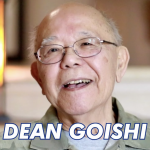 |
| J.C. Suares |
When I first met J.C. Suares in 1993 when I began working on what became POZ, the only thing I knew about him was that he had designed 7 Days, a gorgeous but short-lived but New York weekly, and that he was recommended to me by Richard Perez-Feria, POZ’s first editor.
Over the next 20 years, J.C. and I became close friends. There wasn’t anyone who was part of POZ’s launch who took more pride in what we had created than J.C. His expertise—not just in design and illustration, but all aspects of publishing—was crucial to our launch and success.
But I didn’t realize the extent of his considerable influence on journalism and editorial illustration until I read his obituary last week in The New York Times. In the lead paragraph, it described him as having “radically altered the way editorial illustration was used at The New York Times, as the first art director of its Op-Ed page.”
J.C.’s radical inspiration was that instead of having artists illustrate a specific passage of text, as in “we need something showing the Capitol Building” or “we need a rabbit image,” J.C. gave the illustrator license to interpret an entire article. He wanted the artist’s voice and interpretation to be heard, rather than simply illustrating a writer’s work.
J.C. brought that philosophy to POZ as well, helping to cement a culture of respect for the voices of artists just as much as we respected our writers. It was J.C.’s persuasive insistence that led to POZ devoting so much space to lush photography, vibrant illustration and exceptional design.
Once, early in our relationship, I overruled him on a design suggestion he had proposed. I knew he was annoyed, but he went ahead and designed it as I requested. When I saw the finished pages, I thought they were great and was effusive in my praise. Then he said, “Now look at this one,” and showed me a version created as he had recommended. The difference was so dramatic and obvious that I could only meekly give my approval, getting a “harrumph” from him in return. I never overruled his judgment again.
In the mid ’90s, our West 12th Street loft office was staffed with ACT UP warriors, drag queens and downtown performers, newly out young gay men and lesbians, friends and relatives of Xavier’s and mine, and staid professionals from the publishing industry. Even amongst that colorful cast, J.C. stood out, sometimes arriving at the office in riding gear, wearing jodhpurs and long leather English field boots that came up his knees.
An employee once said to me, “That J.C. guy really takes his fetish gear seriously!” and asked if J.C.’s boyfriend was into the same scene. I had to explain that J.C. had come to our office directly from having played polo in New Jersey and not only was his outfit not fetish gear, but he wasn’t gay.
For more than 30 years, J.C. was married to the amazing Nina Duran, also a POZ contributing artist. In those days, finding a straight man who was passionate about the epidemic and gave so generously of his time and talent was unusual. But I never heard J.C. correct anyone when they assumed he was gay; he was post-gay before the phrase was popular.
When J.C. arrived at the loft each month to design the next issue, he sat down with large sheets of plain white paper and a stack of colored markers. “OK, what have you got?” he would ask, as the editorial staff described the upcoming profiles and features. Everyone in the office loved this process, because J.C. provided a masters-level tutorial as he worked, explaining the reasons behind where he placed a headline or pull quote, why he chose certain colors or fonts or his use of photography and illustration. He loved the back-and-forth, soliciting opinions from everyone, while he sketched quickly, laying out pages for our design department.
When someone on our design staff gave notice, usually resigning for a better opportunity—sometimes presented by J.C. on behalf of one of his clients—he would tell me, “It’s OK, they need to spread their wings. I’ve already got someone you can replace them with…” There’s a legion of professionals in the publishing industry that benefited from his mentorship and support or even owe their careers to his guidance.
J.C. might not have always recalled the names of people, but he never forgot the names of their animal companions and never failed to greet every dog in our pet-friendly office. As a sideline, he produced all those cute cat and dog books, like Fat Cats, Cats in Love, Dogs to the Rescue and many others.
In 1997, J.C., Nina, Xavier and I were at a friend’s house in the south of France when we met Olive, a mutt whose future was uncertain because she had killed a neighbor farmer’s chickens and the farmer was threatening to poison her. Our friends couldn’t send her back to the shelter because she already had two strikes and would get euthanized. She was a biter, back then, but took a shine to Xavier and me. J.C. took charge of her future as seriously as if she was an orphaned human. “She’s picked you,” he said. “You’ve got to take her home, it’s done.” A few weeks later, Olive arrived at JFK Airport and spent the next 12 years with us, sketched many times by J.C.
We used hundreds of J.C.’s own illustrations—sometimes he created them on the spot, in seconds—but he also had a stable of talented freelancers. Money was tight, so whenever I expressed a concern about the budget, he would ask, “How much can you pay?” Whatever I replied—whether I said $500, $25 or nothing—he always responded, “It’s done. They’ll do it.” The Times obituary quoted legendary designer Milton Glaser saying J.C. “made you feel you were working on something really important when he called you.”
When the finances were very difficult, J.C. stopped sending bills for his own time, saying, “It’s too important, we’ve got to keep this going.” Knowing how important POZ was to J.C. elevated its importance for everyone in the office, making us work harder, expand our ambition and produce a better magazine.
My condolences to his partner Nina Duran, his sister Josée Bauman and to the legions of J.C. fans who knew him through the brilliance of his passion, pen and paint.
Sean Strub is the founder of POZ and the executive director of The Sero Project. Jean-Claude “J.C.” Suares was the founding creative director of POZ and 7 Days. He designed or redesigned several major magazines. His illustrations appeared in numerous major publications and more than 100 books. Suares was 71.






1 Comment
1 Comment